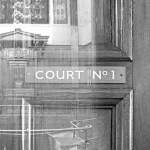In the complex landscape of debt recovery, professionals are often faced with a critical decision: should they pursue the insolvency route or opt for a money claim? This choice can significantly impact the outcome, costs, and duration of the recovery process. Insolvency practitioners and debt collection agencies must understand the nuances of each approach to guide their clients effectively. Let’s delve into the differences between these two paths, examining their effectiveness, risks, and associated costs.
Understanding the Insolvency Route
Whilst the insolvency route is not typically regarded as a debt recovery tool; where you have a non-paying debtor it is a very effective method for recovering liquidated, undisputed debts as it will quickly ascertain if the debtor has money to pay, or not. It involves initiating proceedings that could lead to the debtor being declared insolvent if they fail to pay the outstanding amount. This method can be compelling, as the threat of insolvency can prompt quick engagement from the debtor. However, it’s not without its drawbacks:
- Effectiveness: Highly effective in securing payment from debtors who wish to avoid insolvency, particularly when the debt is clear-cut and undisputed.
- Risks: If the debtor disputes the debt, they may apply for a set aside, complicating the matter and potentially leading to high costs.
- Costs: Generally higher due to the legal and administrative expenses involved in insolvency proceedings.
Exploring the Money Claim Process
On the other hand, the money claim process is more common and generally better suited for disputed debts. It involves filing a claim through the court to recover the debt, leading to a hearing if the case is defended:
- Effectiveness: Provides a structured opportunity for both parties to present their case, making it suitable for complex or disputed debts.
- Risks: The process can be lengthy, and the outcome uncertain, especially if the debtor has a strong defence.
- Costs: While potentially lower than insolvency proceedings, costs can escalate if the case goes to trial.
Choosing the Right Path
The decision between insolvency and money claims should be based on several factors:
- Nature of the Debt: Insolvency is more suited for undisputed, liquidated debts, while money claims are better for disputed amounts.
- Debtor’s Financial Status: If the debtor is solvent and the debt is undisputed, insolvency proceedings can be a powerful tool. However, for debtors with disputed debts or those who are likely to defend a claim, the money claim route is the appropriate route.
- Cost-Benefit Analysis: Consider the costs associated with each approach against the likelihood of recovery. Insolvency proceedings can be more expensive but may result in quicker payment.
- Strategic Considerations: The threat of insolvency can be a significant lever against solvent businesses. Conversely, a money claim might be preferable if there’s a need to establish the validity of the debt through the court.
Guidance for Practitioners and Agencies
Insolvency practitioners and debt collection agencies play a crucial role in advising their clients on the best course of action:
- Conduct Thorough Due Diligence: Before choosing a path, thoroughly investigate the debtor’s financial status and the nature of the debt.
- Assess the Risks and Costs: Evaluate the potential costs and likelihood of success for each approach, considering the specific circumstances of the case.
- Provide Clear Advice: Offer clear, informed advice to clients, outlining the pros and cons of each option and recommending the most suitable approach.
Leveraging Debt-Claims Online Portal
For insolvency practitioners and debt collection agencies looking to streamline their debt recovery processes, the Debt-Claims online portal offers a comprehensive suite of tools and resources. From assessing the viability of different recovery routes to managing the documentation and communication involved in each case, the portal provides invaluable support, ensuring that practitioners can offer the best possible advice and service to their clients.
Conclusion
Choosing between the insolvency route and a money claim requires careful consideration of the debt’s nature, the debtor’s financial situation, and the associated risks and costs. By understanding the advantages and limitations of each approach, insolvency practitioners and debt collection agencies can guide their clients toward the most effective debt recovery strategy. To find out more about how Debt-Claims Solicitors can assist your business, contact us today or call us on 02475 267 433.


